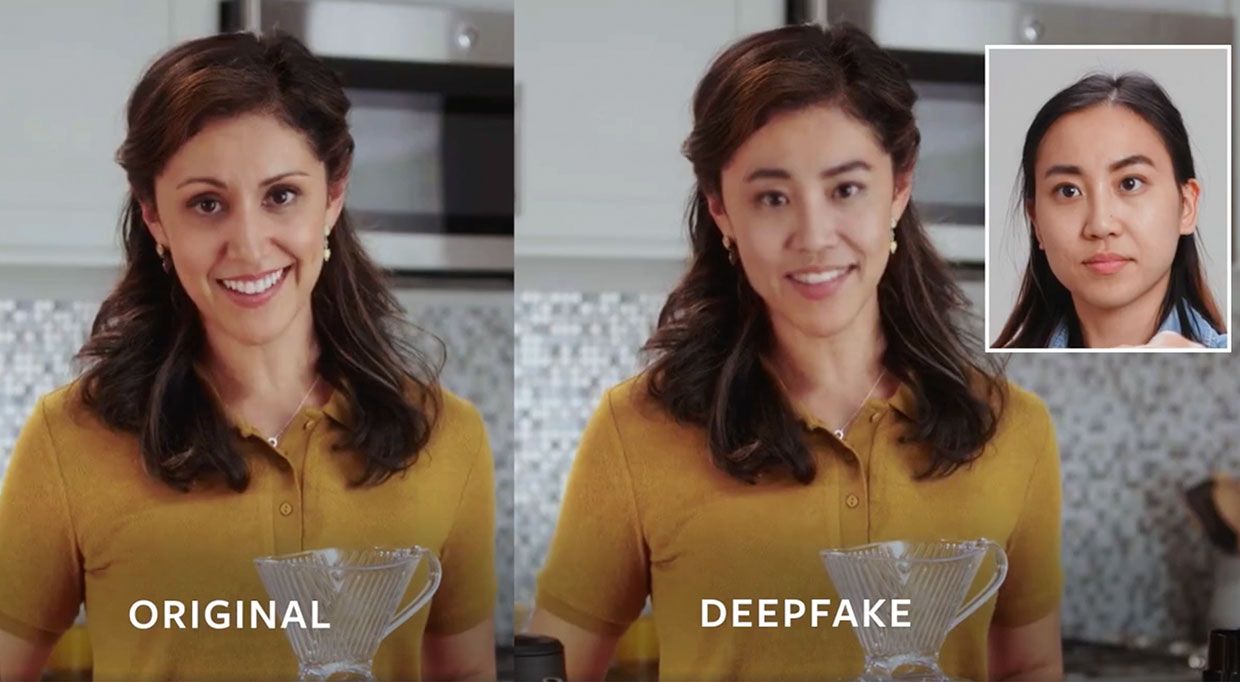Instagram is one of the most, if not the most popular social media app there is. It’s an app that larger celebrities use to show their life and many others do as well, but there is one problem, a lot of the information and images uploaded on Instagram is manufactured.
We live in a day and age where image and video editing is extremely advanced and are widely used by many users throughout the internet to alter the original image. Very recently with the ongoing situation between Ukraine and Russia, there surfaces a video, supposed to be the president of Ukraine saying that they surrender and that the soldiers of Ukraine should give in to Russia. But due to the poor editing of the video, it quickly surfaced that the video was a deep fake.
Deep fake is a technology that edits your, or someone else’s face into a different person’s face. Making it look like you’re that person, or that that person is you. This has been ongoing for a few years and has been under a lot of controversies, one of the largest incidents was when celebrities’ faces began to appear in adult videos. Deepfake is a technology that can easily be used for bad, and so far it hasn’t been done for any good reasons but to steal identities and create modified videos, fooling the viewers.
But not only is Deepfake doing potential damage to social media but so does Facetune and photoshop which a lot of influencers use to ‘touch up’ their images, but in reality, they edit their body through and give younger people an unrealistic body image, ruining their confidence believing that these ‘influencers’ look a certain way naturally, but in reality, they’re edited, very edited.
But there are a few ways that heavy editing can be implemented in a good way, like in movies if a movie star has passed away, with the help of CGI they can bring them back into their role, so the character can still fulfil their purpose in life, of course, with the permission of the person that passed’s relatives.

Citizen Journalism
Citizen Journalism is exactly what it says it is, due to everyone having a camera in their pocket and access to the internet where they can upload videos and images immediately, if not stream them live for the world to see. But just like regular journalism, it’s very easy to angle certain information, by taking it out of context and editing videos. Citizen journalism, however, is possibly the rawest content you can get hold of when it comes to news. Because many times, the media edit information, take it out of context and angle it to suit their political agenda.

Social Photography
Social photography, unlike social media, is today, focuses on the reality of our society and the world. It is a form of documentary photography, to show the ongoing social issues we have to deal with, and not the fabricated reality people post online themselves. The images in Social Photographies are raw and unedited, showing either the true beauty of the world or the harsh reality of it.

Nostalgia
Nostalgia is possibly one of the more powerful tools in terms of marketing or wanting people to feel a certain way. I personally, don’t know how many times I’ve spent money on the video game Final Fantasy 7 and Final Fantasy 10, due to the re-release of the games for different platforms since I have such fond memories of them growing up. Of course, every time I play it I’m not disappointed. Nostalgia can also be portrayed in art, by resembling something we had when we were younger or did when we were younger. Images and videos, affect us in ways we miss back then. With the technology today it’s very easy to re-create media that would look like something we did or saw back when we were younger, especially the older generation before technology advanced to the point we are at today.
As previously mentioned, Instagram is a sea of editing and false realities, with celebrities and regular people posting images documenting their life. With the help of filters and end editing, people can edit their bodies and faces to look what they want to look like, to later post it, and cause damage to people’s confidence, giving them an unrealistic image of what a body and face should look like. But this isn’t the only thing on social media that isn’t fabricated. In the past few years, 3D artists have begun projects, creating artificial people, which are now influencers. These people are not real, they’re made using 3D models but they’re famous, and it truly shows where we are today.


